Structure and Governance in 1944
¶ 1 Leave a comment on paragraph 1 0 After the resignation of Mary K. White in 1942 as NCFR’s first Executive Director, a replacement was not hired for 2 years, partially because during that time an Annual Conference was not being held because of the war. However, at the 1944 conference Dr. Evelyn Millis Duvall, then Executive Secretary of the Chicago Association of Child Study and Parent Education, offered her services for $1.00 per year salary. Her autobiography can be found in Pioneering Paths in the Study of Families: Lives and Career of Family Scholars (Haworth Press, 2001); however, because of her impressively diverse background, a brief description from her memoirs is offered here:
¶ 2 Leave a comment on paragraph 2 0 Born in Oswego, New York, Evelyn was a cum laude graduate of Syracuse University with a BS in geometry. As a student, she did an internship with a mushroom farmer that propelled her into the radar of the U.S. Department of Agriculture. She studied fungal infections affecting mushrooms and developed and invented a way to fumigate houses and sterilize composts in which mushrooms were grown to produce spoor-free mushrooms. Although the Department of Agriculture offered her a job on graduation, she chose to finish the project and in 1927 married Sylvanus Duvall in Oswego. He had just been hired on the faculty of Vanderbilt University in Nashville, TN. Upon arrival, Evelyn immediately enrolled in medical school, but she was disqualified because she was female, married, and had not taken pre-med courses. Instead, she finished an MA in biology. In 1929, their first daughter, Jean, was born. A second daughter, Joy, was born in 1931. Because of the Great Depression, Sylvanus lost his job, and because of his ministerial background he took a job as First Congregationalist Minister at a small country church in Vermont. Both Evelyn and Sylvanus were active with youth groups, parenting classes, and family counseling. In 1934, Sylvanus was offered a professorship at George Williams College in Chicago, so the family moved again. Evelyn became involved in the Chicago Association of Child Study and Parenting Education and began comparing mothers’ role impressions and how they affected their parenting styles by socioeconomic class. This led her to the University of Chicago Sociology Department and Ernest W. Burgess, who mentored her in setting up a customized PhD program that combined biology, sociology, psychology, and cultural anthropology. This combination later became known as “Human Development.” Evelyn earned her PhD as one of the first graduates. Her dissertation, published in 1946, was published in the American Sociological Association’s journal. Entitled “Conceptions of Parenthood,” it became the basis of further research and publications by Glenn Elder (Iowa State University) and Robert Blood (Merrill–Palmer Institute, Detroit). Her work also led to an invitation from President Franklin D. Roosevelt to attend the first White House Conference on the Family, and to her involvement with NCFR.
¶ 3 Leave a comment on paragraph 3 0 Evelyn also used her diverse knowledge and skills to become a popular, well-respected book and magazine writer. In 1942, she and Dr. Reuben Hill were commissioned by the U.S. Armed Forces Institute to write materials on marriage and families and to prepare curricula and courses for military personnel awaiting active duty. Out of that came the first textbook on marriage and family, published by Heath Co., When You Marry, which went through numerous editions and was published in more than 15 foreign languages and sold worldwide. Evelyn published many more books, including the first family-related high school textbook, Family Living (1950). She and Sylvanus often worked as a team at writing and speaking at conferences worldwide. One of their proudest projects was their leadership of the North American Conference on Church and Family (1961) for the U.S. and Canadian Councils of Churches. At that conference they took up many controversial issues, including abortion.
¶ 4 Leave a comment on paragraph 4 0 Evelyn’s work with Reuben Hill in the 1940s was the linchpin in the development of a new academic discipline, the field of Family Development. It was an interdisciplinary field that comprised several other disciplines. The thesis they offered for this field would influence family researchers, counselors, and practitioners for generations to come. Their thesis was as follows:
¶ 5 Leave a comment on paragraph 5 0 Families grow through predictable stages of development through the family life cycle: beginning families (married couple without children); Childbearing families (oldest child-birth–30 months); Families with preschool children (oldest child 30 mos.–6 years); families with school children (oldest child 6–13 years); Families with teenagers (oldest child 13–20 years); Families in the middle years (empty nest to retirement); Aging families (retirement to death of both spouses; Duvall, 1957:13). While families do not pass through neatly, the model works.
¶ 6 Leave a comment on paragraph 6 0 It has influenced family theory, inspired creative family research, and brought about innovative family practice and teaching. It has helped such professionals as counselors, social workers, teachers, and therapists know what to look for within an individual’s stage of personal and family development.
¶ 7 Leave a comment on paragraph 7 0 NCFR played an important role in the wartime and postwar period of rehabilitating military families affected by war. Among such scholars as Hill, Duvall, Burgess, and others was Lester Kirkendall, an early NCFR leader. Here is a quotation from the 1987 history book: “In August 1944, I had the unusual privilege of initiating a course in marriage and family relations for the 2,000 American soldiers enrolled at the University Study Center in Florence, Italy. Arriving at the classroom on the opening day I found some 100 GIs milling about waiting the dismissal of the previous class … men from 46 states were enrolled … approximately 25% were married … The following topics were among those included: ‘The Adjustment of the Returning Serviceman to His Home and Family’ and ‘Can the GI Combine Marriage and Education?'” (NCFR History Book, p. 12).
¶ 8 Leave a comment on paragraph 8 0 The NCFR executive committee of the Board requested the addition of three new Vice Presidential slots to be voted on by the members by mail ballot. The newly elected officers that year were Sidney Goldstein, President; Emily Hartshorn Mudd, First Vice President; and Evelyn Millis Duvall, Secretary–Treasurer.
Gallery
- Evelyn Millis Duvall
- Sylvanus Duvall
- Ernest Burgess
- Reuben Hill
- Lester Kirkendall
- Sidney Goldstein
- Emily Hartshorn Mudd


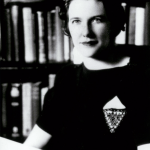
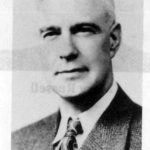


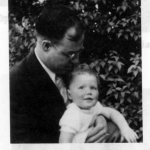
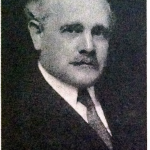
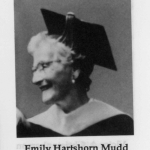
Comments
0 Comments on the whole Page
Login to leave a comment on the whole Page
0 Comments on paragraph 1
Login to leave a comment on paragraph 1
0 Comments on paragraph 2
Login to leave a comment on paragraph 2
0 Comments on paragraph 3
Login to leave a comment on paragraph 3
0 Comments on paragraph 4
Login to leave a comment on paragraph 4
0 Comments on paragraph 5
Login to leave a comment on paragraph 5
0 Comments on paragraph 6
Login to leave a comment on paragraph 6
0 Comments on paragraph 7
Login to leave a comment on paragraph 7
0 Comments on paragraph 8
Login to leave a comment on paragraph 8
0 Comments on paragraph 9
Login to leave a comment on paragraph 9
0 Comments on paragraph 10
Login to leave a comment on paragraph 10
0 Comments on paragraph 11
Login to leave a comment on paragraph 11
0 Comments on paragraph 12
Login to leave a comment on paragraph 12
0 Comments on paragraph 13
Login to leave a comment on paragraph 13
0 Comments on paragraph 14
Login to leave a comment on paragraph 14
0 Comments on paragraph 15
Login to leave a comment on paragraph 15
0 Comments on paragraph 16
Login to leave a comment on paragraph 16